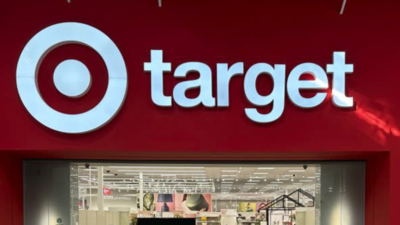In a move that’s stirring up both concern and curiosity, Target has announced a new policy that has some shoppers scratching their heads. The retail giant, known for its inclusive and customer-friendly environment, has implemented restrictions that will block certain types of shoppers from accessing specific parts of its stores. The policy, aimed at reducing theft and protecting store employees, is creating a significant divide in how customers and employees alike view the future of their shopping experiences.
For Target, a company that has built a reputation on being a community-oriented retail space, this shift is a big one. But, for many customers who have come to rely on Target not only as a shopping destination but as a space for comfort and ease, this new policy may feel like a breach of trust.
Understanding the Policy: Who Gets Blocked and Why?
The new policy, while not widely publicized, focuses on blocking access to specific store areas for customers deemed to be at high risk for theft. According to reports, certain items—ranging from electronics to high-demand beauty products—will be restricted to customers who are flagged as repeat offenders or those exhibiting suspicious behavior. This move, designed as a direct response to rising theft rates and security concerns in various locations, has sparked widespread debate.

For the retail workers and store managers on the front lines, this policy represents a necessary step to protect both their safety and the store’s profitability. Theft, which has become an increasingly serious issue in retail, affects not only the bottom line but also the day-to-day experience of employees and shoppers alike. Stores have been seeing an uptick in the theft of items, and with crime rates fluctuating in various parts of the country, retailers like Target are struggling to strike the right balance between safety and customer service.
But while the policy is well-intentioned, it is not without its flaws. Many customers and even some employees are voicing concerns about its fairness and effectiveness.
The Impact on Customers: A Sense of Alienation
For many shoppers, especially those who may not have been affected by theft or crimes in stores, the new restrictions are frustrating. Long lines, added barriers to entry, and the idea of being monitored or restricted in a place that was once a safe space for family and community can feel alienating. Some have expressed that they feel as if they are being treated like criminals before they’ve even done anything wrong. The feeling of being watched or surveilled is unsettling for many shoppers who have come to enjoy the accessibility and simplicity Target has historically provided.
For parents with young children, senior citizens, or people with disabilities, the policy can create additional challenges. Some of Target’s loyal customers argue that they are now being unfairly impacted by an issue they had no part in, only adding to the already overwhelming burden of having to adapt to a changing retail environment.
“I don’t steal, I just want to get my groceries and pick up a few household items. Why should I feel like I’m being punished for something that’s not even my fault?” one regular shopper in Minnesota said. “It’s like Target no longer trusts its customers.”
The Employee Perspective: A Mixed Reaction
For Target employees, the new policy may offer some relief in terms of security. Many retail workers have long felt unsafe dealing with theft in the store, and while store security measures have traditionally focused on preventing loss, the new policy may allow for a more proactive approach to protecting both the employees and the products they sell.
“I’ve had to deal with people stealing right in front of me, and it’s terrifying,” said Sarah, a Target employee in California. “At least this way, we have a better chance of keeping things safe.”
However, not all employees agree with the move. Some employees feel that the policy could put them in an uncomfortable and difficult position of enforcing what could be perceived as unfair treatment of customers. The idea of restricting access based on behavior or assumptions could lead to uncomfortable interactions between employees and shoppers, potentially fostering hostility and distrust in what was once a community-based environment.
“I get it, but sometimes it feels like we’re the ones who have to enforce something we don’t believe in. It’s uncomfortable,” said James, a long-time Target cashier.
Employees are not just worried about the impact on their relationships with customers, but also the potential consequences of enforcing the policy. There are concerns about how it may affect their interactions with vulnerable or marginalized groups who could be unfairly profiled or targeted under the new rules.
Is the Policy Effective? The Bigger Picture
Beyond the emotional and logistical impacts on employees and customers, the question remains: Will this policy actually reduce theft and improve store security in a meaningful way? While Target and other retailers have implemented similar measures with varying degrees of success, critics argue that the new restrictions could be a Band-Aid solution to a much larger problem.
Many experts agree that tackling theft in retail requires a multifaceted approach—one that combines more advanced technology (such as surveillance systems), better training for employees, and increased collaboration with law enforcement. Simply restricting access to certain store sections might not address the root causes of theft, such as economic disparity, addiction, or social issues that often contribute to criminal behavior.
Retail analysts are also cautioning against assuming that these policies will drastically improve the situation in the long run. There are fears that such measures might only push the problem elsewhere, such as to online shopping platforms or smaller retail locations, where theft can also be a major issue.
A Broader Conversation: Trust, Accountability, and the Future of Retail
At its core, the introduction of such a policy touches on a much deeper issue: trust. In a world where retail has become increasingly impersonal, with automation and technology replacing human interactions, it’s essential for stores like Target to maintain the trust of their customers and employees. This policy is, in some ways, a reflection of how the company sees the growing divide between them and their shoppers.
“Target has always been a place where people felt they could just come in, shop, and leave without hassle,” said another frequent shopper. “This change makes me feel like I’m part of the problem, even when I’m just doing my regular shopping trip.”
In the long run, the question will remain: can Target balance its security needs with its desire to provide a welcoming, trusted environment for all? Will customers feel like they are once again entering a space where their needs are prioritized over suspicion, or will this policy mark a new, impersonal chapter in the brand’s storied history?
The broader challenge for all retailers is figuring out how to reduce theft without alienating loyal customers. And for Target, a company that has built its reputation on inclusivity, affordability, and accessibility, this is a tightrope walk between maintaining security and staying true to its community values.
Humanizing the Impact: Real Stories Behind the Numbers
Behind the policy change, there are real people—employees trying to maintain a sense of safety, shoppers who are simply looking for a good deal, and families who have made Target a part of their weekly routines. The new restrictions, while designed with good intentions, are not just about dollars and cents—they represent a shift in the retail landscape that affects everyday people.
While the motivations behind the policy are clear, it’s important for Target to listen to the voices of its community. By considering the impact on both its employees and customers, the company can better understand how to navigate the complexities of retail theft without losing sight of the human beings at the center of it all.

